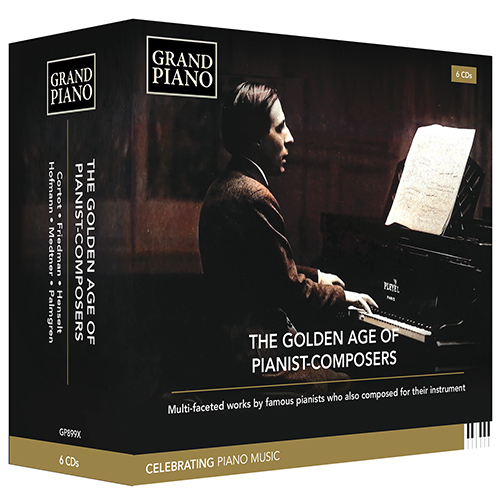
About this Release
Golden Age of Pianist-Composers (The)
(6-CD Boxed Set)
This collection spotlights six legendary pianist-composers from the 19th and 20th centuries. Adolf von Henselt’s ferocious technical studies and Romantic salon pieces led Schumann to dub him ‘the Chopin of the North’. Polish virtuoso Ignaz Friedman’s works offer delightful melodic beauty and harmonic inventiveness set alongside works by his countryman, Józef Hofmann, renowned as a poet of the keyboard. The French master musician Alfred Cortot is represented here with a selection of stylish piano arrangements of works by great composers. As one of Finland’s most respected musicians during the early 20th century, Selim Palmgren displays a wide variety of technical and stylistic challenges with music that is both traditional and visionary; while music by the exiled Russian composer Nikolay Medtner is highly Romantic and spiritually charged. These six towering superstars represent the summit of the piano’s Romantic golden age, heard here in critically acclaimed performances by award-winning pianists.
Tracklist
|
Henselt, Adolf von
|
|
1
Wiegenlied, Op. 45 () (00:04:08)
|
|
2
Petite Romance (1855) (00:01:24)
|
|
3
10 Pieces, Op. 13: No. 2. Etude, "La Gondola" () (00:02:07)
|
|
4
2 Nocturnes, Op. 6: No. 1. Schmerz im Glück () (00:03:04)
|
|
8
Valse Melancolique, Op. 36 () (00:05:28)
|
|
2 Petites valses, Op. 28 (1854) (00:05:40 )
|
|
9
No. 1 in F Major (00:02:34)
|
|
10
No. 2 in C Major (00:03:08)
|
|
Strauss I, Johann
|
|
11
Waltz (arr. A. von Henselt for piano) () (00:01:27)
|
|
Henselt, Adolf von
|
|
12
6 Romances Russes: No. 6 in D Minor (after Dargomizhsky) () (00:02:57)
|
|
12 Études caractéristiques, Op. 2 () (00:24:00 )
|
|
5
No. 6 in F-Sharp Major, "Si oiseau j'étais, à toi je volerais!" (00:02:04)
|
|
6
No. 3 in B Minor, "Exauce mes voeux!" (00:03:11)
|
|
7
No. 4 in B-Flat Major, "Repos d'amour" (00:01:32)
|
|
15
12 Etudes Caractéristiques, Op. 2: No. 2 in D-Flat Major, "Pensez un peu a moi, qui pense toujours a vous!" (00:02:57)
|
|
12 Études de Salon, Op. 5 () (00:24:00 )
|
|
13
No. 3 in A Minor, "Hexentanz" (00:01:52)
|
|
14
No. 9 in A Major (00:02:28)
|
|
16
12 Etudes de Salon, Op. 5: No. 6 in A-Flat Major, "Danklied nach Sturm" (00:07:21)
|
|
17
Erinnerung und Freundschaft, Op. 4: No. 1. Rhapsodie () (00:02:20)
|
|
Weber, Carl Maria von
|
|
18
Aufforderung zum Tanze (Invitation to the Dance), Op. 65, J. 260 (arr. A. von Henselt for piano) (1819) (00:09:05)
|
|
Friedman, Ignaz
|
|
6 Wiener Tänze nach motiven von Eduard Gärtner (1916) (00:20:00 )
|
|
1
No. 1. Tempo di Valse lente (00:03:48)
|
|
2
No. 2. Vivo e sciolto (00:03:22)
|
|
3
No. 3. Allegretto (00:04:04)
|
|
4
No. 4. Langsamer Walzer (00:04:48)
|
|
5
No. 5. Moderato (00:03:02)
|
|
6
No. 6. Epilogue: Moderato (00:02:34)
|
|
4 Klavierstücke, Op. 27 (1908) (00:11:37 )
|
|
7
No. 1. Prolog: Andante, molto tranquillo (00:03:46)
|
|
8
No. 2. Geständnis: Andantino, molto espressivo (00:02:31)
|
|
9
No. 3. Mazurka: Vivo, con grazia (00:02:30)
|
|
10
No. 4. Im Volkston: Moderato, poco marciale (00:02:52)
|
|
Strophes, Op. 71 (1917) (00:09:40 )
|
|
11
No. 1. Non troppo mosso (00:01:52)
|
|
12
No. 2. Passionato ed agitato (00:02:13)
|
|
13
No. 3. Andantino (00:01:15)
|
|
14
No. 4. Andante mesto (00:01:53)
|
|
15
No. 5. Quasi allegro, con eleganza (00:02:26)
|
|
Stimmungen, Op. 79 (1918) (00:04:00 )
|
|
16
No. 1. Poco mosso (00:01:52)
|
|
17
No. 2. Vivace e volante (00:00:45)
|
|
18
No. 3. Moderato, sempre largamente (00:01:48)
|
|
19
No. 4. Andante (00:02:59)
|
|
20
No. 5. Comodo, Tempo di Ländler (00:01:04)
|
|
21
No. 6. Andante, pensieroso (00:01:48)
|
|
22
No. 7. Grazioso e meno mosso (00:01:09)
|
|
23
No. 8. Appassionato (00:01:27)
|
|
24
No. 9. Andante, con tristezza (00:02:18)
|
|
4 Preludes, Op. 61 (1915) (00:06:00 )
|
|
25
No. 1. Pensieroso (00:01:43)
|
|
26
No. 2. Vivo e molto leggiero (00:01:35)
|
|
27
No. 3. Con abandono (00:01:28)
|
|
28
No. 4. Molto appassionato ed animato (00:01:28)
|
|
Hofmann, Józef
|
|
Charakterskizzen, Op. 40 () (00:19:00 )
|
|
1
No. 1. Vision (00:05:01)
|
|
2
No. 2. Jadis (00:02:36)
|
|
3
No. 3. Nenien (00:06:14)
|
|
4
No. 4. Kaleidoskop (00:04:46)
|
|
5
Etude for the Left Hand Alone in C Major, Op. 32 () (00:03:46)
|
|
6
2 Mazurkas, Op. 16: No. 1 in A Minor () (00:04:55)
|
|
Piano Sonata in F Major, Op. 21 () (00:18:37 )
|
|
7
I. Moderato (00:05:43)
|
|
8
II. Scherzo (00:02:51)
|
|
9
III. Andante (Recitativo. Tempo di marcia) (00:03:46)
|
|
10
IV. Allegro moderato (00:06:17)
|
|
11
Mazurka in B Minor (1885) (00:02:16)
|
|
12
Mazurka in D Minor (1886) (00:04:13)
|
|
13
Theme with Variations and Fugue, Op. 14 () (00:16:00)
|
|
Fauré, Gabriel
|
|
Dolly, Op. 56 (arr. A Cortot for piano) (1896) (00:14:00 )
|
|
1
No. 1. Berceuse: Allegretto moderato (00:02:29)
|
|
2
No. 2. Mi-a-ou: Allegro vivo (00:01:55)
|
|
3
No. 3. Le jardin de Dolly: Andantino (00:02:18)
|
|
4
No. 4. Kitty-valse: Tempo di valse (00:02:14)
|
|
5
No. 5. Tendresse: Andante (00:03:08)
|
|
6
No. 6. Le pas espagnol: Allegro (00:02:04)
|
|
Bach, Johann Sebastian
|
|
7
Toccata and Fugue in D Minor, BWV 565 (arr. A. Cortot for piano) (1708) (00:08:41)
|
|
Brahms, Johannes
|
|
8
5 Lieder, Op. 49: No. 4. Wiegenlied (arr. A. Cortot for piano) (1868) (00:02:05)
|
|
Bach, Johann Sebastian
|
|
9
Keyboard Concerto in F Minor, BWV 1056: II. Largo (arr. A. Cortot for piano) (1742) (00:02:25)
|
|
Chopin, Fryderyk
|
|
10
Cello Sonata in G Minor, Op. 65: III. Largo (arr. A. Cortot for piano) (1846) (00:02:39)
|
|
Schubert, Franz
|
|
11
Heidenroslein, Op. 3, No. 3, D. 257 (arr. A. Cortot for piano) (1815) (00:01:43)
|
|
Franck, César
|
|
Violin Sonata in A Major, M. 8 (arr. A. Cortot for piano) (1886) (00:25:00 )
|
|
12
I. Allegretto ben moderato (00:05:46)
|
|
13
II. Allegro (00:07:43)
|
|
14
III. Recitativo - Fantasia: Ben moderato - molto lento (00:05:55)
|
|
15
IV. Allegretto poco mosso (00:05:57)
|
|
Palmgren, Selim
|
|
1
Konsertetyd (Concert Étude) in C Major (1906) (00:02:06)
|
|
2 Contrastes (Contrasts) (1899) (00:04:00 )
|
|
2
No. 1. Les adieux (00:03:34)
|
|
3
No. 2. Arlequin (00:01:10)
|
|
4
Valssi länsisuomalaiseen tapaan (Waltz in a Western Finnish Style) () (00:00:53)
|
|
5
Kevätauerta (Spring Haze) (1940) (00:00:39)
|
|
3 Klavierstücke (3 Piano Pieces), Op. 32 (1912) (00:10:00 )
|
|
6
No. 1. Im Walzertakt (00:03:09)
|
|
7
No. 2. Auf dem Wasser (00:03:08)
|
|
8
No. 3. Im Polkatakt (00:03:15)
|
|
3 Preludes, Op. 84 (1928) (00:07:00 )
|
|
9
No. 1. Preludietto (00:01:04)
|
|
10
No. 2. Prelude-Nocturne (00:04:40)
|
|
11
No. 3. Prelude-Caprice (00:01:02)
|
|
24 Preludes, Op. 17 (1907) (00:03:00 )
|
|
12
No. 1. Andante (00:01:35)
|
|
13
No. 2. I folkton (In Folk Style) (00:00:55)
|
|
14
No. 3. Allegretto con grazia (00:01:31)
|
|
15
No. 4. Tempo di valse (poco moderato) (00:02:31)
|
|
16
No. 5. Presto (00:00:58)
|
|
17
No. 6. Sarabande: Andante cantabile (00:02:23)
|
|
18
No. 7. Un poco mosso (00:01:01)
|
|
19
No. 8. Allegro feroce. Furioso (00:01:41)
|
|
20
No. 9. Vaggvisa (Cradle Song): Tranquillo (00:02:48)
|
|
21
No. 10. I folkton (In Folk Style): Andante semplice (00:01:23)
|
|
22
No. 11. Drömbild (Dream Picture): Vibrato (non troppo presto) (00:01:36)
|
|
23
No. 12. Havet (The Sea): Allegro feroce (00:01:38)
|
|
24
No. 13. Veloce (00:01:43)
|
|
25
No. 14. Pesante (00:01:34)
|
|
26
No. 15. Ringdans (Round Dance): Con grazia (Allegro) (00:01:27)
|
|
27
No. 16. Andante con moto (00:02:25)
|
|
28
No. 17. Allegro agitato (00:00:57)
|
|
29
No. 18. Duo: Rubato (00:02:06)
|
|
30
No. 19. Fågelsång (Bird Song): Allegro giocoso (00:01:07)
|
|
31
No. 20. In memoriam: Lugubre (00:01:53)
|
|
32
No. 21. Un poco mosso (00:01:33)
|
|
33
No. 22. I folkton (In Folk Style) (00:00:58)
|
|
34
No. 23. Venezia: Malinconico (00:02:56)
|
|
35
No. 24. Kriget (The War): Allegro marziale (00:01:58)
|
|
Medtner, Nicolai
|
|
Sonatina in G Minor (1898) (00:07:23 )
|
|
1
I. Allegretto, ma non troppo (00:02:42)
|
|
2
II. Scherzo: Allegro (00:04:47)
|
|
Piano Sonata in F Minor, Op. 5 (1903) (00:31:00 )
|
|
3
I. Allegro (00:13:50)
|
|
4
II. Intermezzo: Allegro - (00:03:41)
|
|
5
III. Largo - (00:08:43)
|
|
6
IV. Finale: Allegro risoluto (00:09:12)
|
|
7
Forgotten Melodies, Op. 38: No. 1. Sonata reminiscenza (1922) (00:15:27)
|
The Composer(s)
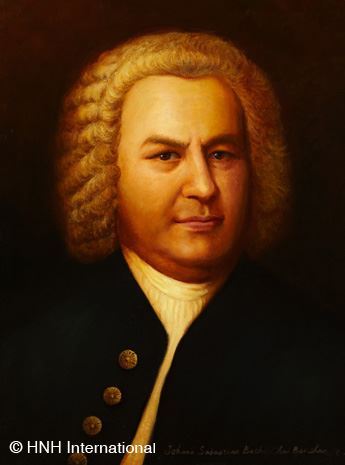 Johann Sebastian Bach belonged to a dynasty of musicians. In following inevitable family tradition, he excelled his forebears and contemporaries, although he did not always receive in his own lifetime the respect he deserved. Despite widespread neglect for almost a century after his death, Bach is now regarded as one of the greatest of all composers. Bach-Werke-Verzeichnis numbers, abbreviated to BWV, are generally accepted for convenience of reference.
Johann Sebastian Bach belonged to a dynasty of musicians. In following inevitable family tradition, he excelled his forebears and contemporaries, although he did not always receive in his own lifetime the respect he deserved. Despite widespread neglect for almost a century after his death, Bach is now regarded as one of the greatest of all composers. Bach-Werke-Verzeichnis numbers, abbreviated to BWV, are generally accepted for convenience of reference.  Born in Hamburg, the son of a double bass player and his older seamstress wife, Brahms attracted the attention of Schumann, to whom he was introduced by the violinist Joachim. After Schumann’s death he maintained a long friendship with the latter’s widow, the pianist Clara Schumann, whose advice he always valued. Brahms eventually settled in Vienna, where to some he seemed the awaited successor to Beethoven. His blend of Classicism in form with a Romantic harmonic idiom made him the champion of those opposed to the musical innovations of Wagner and Liszt. In Vienna he came to occupy a position similar to that once held by Beethoven, his gruff idiosyncrasies tolerated by those who valued his genius.
Born in Hamburg, the son of a double bass player and his older seamstress wife, Brahms attracted the attention of Schumann, to whom he was introduced by the violinist Joachim. After Schumann’s death he maintained a long friendship with the latter’s widow, the pianist Clara Schumann, whose advice he always valued. Brahms eventually settled in Vienna, where to some he seemed the awaited successor to Beethoven. His blend of Classicism in form with a Romantic harmonic idiom made him the champion of those opposed to the musical innovations of Wagner and Liszt. In Vienna he came to occupy a position similar to that once held by Beethoven, his gruff idiosyncrasies tolerated by those who valued his genius.  Born in Liège in 1822, César Franck was originally intended by his father for a career as a virtuoso pianist. In Paris his nationality excluded him at first from the Conservatoire, where he eventually failed to achieve the necessary distinction as a performer, turning his attention rather to composition. In 1846 he left home and went to earn his living in Paris as a teacher and organist, winning particular fame in the second capacity at the newly built church of Ste Clotilde, with its Cavaillé-Coll organ. He drew to himself a loyal and devoted circle of pupils and in 1871 won some official recognition as the nominated successor of Benoist as organ professor at the Conservatoire. A man of gentle character, known to his pupils as ‘Pater seraphicus’, he exercised considerable influence through his classes and performances although he remained, as a composer, something of an outsider in a Paris interested largely in opera.
Born in Liège in 1822, César Franck was originally intended by his father for a career as a virtuoso pianist. In Paris his nationality excluded him at first from the Conservatoire, where he eventually failed to achieve the necessary distinction as a performer, turning his attention rather to composition. In 1846 he left home and went to earn his living in Paris as a teacher and organist, winning particular fame in the second capacity at the newly built church of Ste Clotilde, with its Cavaillé-Coll organ. He drew to himself a loyal and devoted circle of pupils and in 1871 won some official recognition as the nominated successor of Benoist as organ professor at the Conservatoire. A man of gentle character, known to his pupils as ‘Pater seraphicus’, he exercised considerable influence through his classes and performances although he remained, as a composer, something of an outsider in a Paris interested largely in opera.  Friedman’s compositions are largely miniatures even if grouped into sets. He is the master of the character piece. Writing in late German Romantic style, his compositions are often harmonically complex although tonal. Friedman does not employ the sensuality of a Scriabin or a Szymanowski but allows the beauty and poignancy of the melody to shine. Rhythms are traditional and within the genre depicted. Pianistically accessible, Friedman’s works demand technical and musical perfection.
Friedman’s compositions are largely miniatures even if grouped into sets. He is the master of the character piece. Writing in late German Romantic style, his compositions are often harmonically complex although tonal. Friedman does not employ the sensuality of a Scriabin or a Szymanowski but allows the beauty and poignancy of the melody to shine. Rhythms are traditional and within the genre depicted. Pianistically accessible, Friedman’s works demand technical and musical perfection. 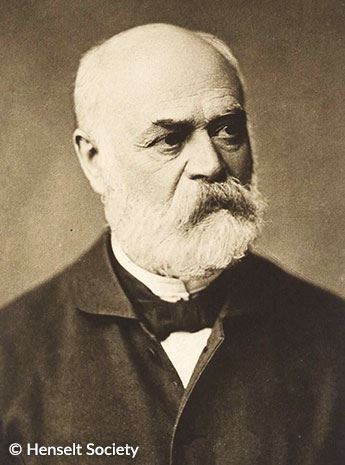 Adolf von Henselt was born in the Bavarian town of Schwabach on 9 May 1814. Praised by Liszt for his unequalled cantabile playing, Henselt belonged to a galaxy of star pianists who were all of a similar age. These included Chopin, Schumann, Thalberg and, of course, Liszt. Although Henselt began his musical studies on the violin, he soon changed to the piano and made spectacularly rapid progress. It was as a child that he developed a strong and permanent affinity with the musical Romanticism of Carl Maria von Weber.
Adolf von Henselt was born in the Bavarian town of Schwabach on 9 May 1814. Praised by Liszt for his unequalled cantabile playing, Henselt belonged to a galaxy of star pianists who were all of a similar age. These included Chopin, Schumann, Thalberg and, of course, Liszt. Although Henselt began his musical studies on the violin, he soon changed to the piano and made spectacularly rapid progress. It was as a child that he developed a strong and permanent affinity with the musical Romanticism of Carl Maria von Weber.  Like so many other performing artists of the past, Hofmann was equally at home composing. His output includes a symphony, five piano concertos and a considerable quantity of solo piano music. Some of his smaller pieces appeared under the pseudonym Dvorsky (which is actually the Polish equivalent of Hofmann). He delighted in the fiction that Michel Dvorsky was a reclusive young Frenchman who modestly sent his efforts to Hofmann for evaluation. The humour behind this innocent little deceit is akin to that of the violinist Fritz Kreisler, who famously ascribed the names of little-known composers to some of his own slighter pieces. Hofmann’s compositions are positioned very firmly in the Romantic tradition. To his contemporaries, familiar with the recent work of Debussy or Scriabin, they probably came across as old-fashioned, but now that sufficient time has passed we can simply enjoy the music on its own terms without worrying about whether it is ‘modern’ enough.
Like so many other performing artists of the past, Hofmann was equally at home composing. His output includes a symphony, five piano concertos and a considerable quantity of solo piano music. Some of his smaller pieces appeared under the pseudonym Dvorsky (which is actually the Polish equivalent of Hofmann). He delighted in the fiction that Michel Dvorsky was a reclusive young Frenchman who modestly sent his efforts to Hofmann for evaluation. The humour behind this innocent little deceit is akin to that of the violinist Fritz Kreisler, who famously ascribed the names of little-known composers to some of his own slighter pieces. Hofmann’s compositions are positioned very firmly in the Romantic tradition. To his contemporaries, familiar with the recent work of Debussy or Scriabin, they probably came across as old-fashioned, but now that sufficient time has passed we can simply enjoy the music on its own terms without worrying about whether it is ‘modern’ enough.  Nikolay Karlovich Medtner was Moscow born-and-bred, although his ancestry was German. As a child he showed musical promise, and studied piano with his mother until his acceptance into the Moscow Conservatory at the age of twelve. Medtner’s teachers during these years included Vasily Safonov for piano, Anton Arensky for harmony and Sergey Taneyev for counterpoint, the latter having a particularly strong influence on his musical development. Taneyev instilled in all his students a respect for the old masters—Palestrina, Bach, Mozart and especially Beethoven—and stressed contrapuntal and structural command as essential to any composer’s craft.
Nikolay Karlovich Medtner was Moscow born-and-bred, although his ancestry was German. As a child he showed musical promise, and studied piano with his mother until his acceptance into the Moscow Conservatory at the age of twelve. Medtner’s teachers during these years included Vasily Safonov for piano, Anton Arensky for harmony and Sergey Taneyev for counterpoint, the latter having a particularly strong influence on his musical development. Taneyev instilled in all his students a respect for the old masters—Palestrina, Bach, Mozart and especially Beethoven—and stressed contrapuntal and structural command as essential to any composer’s craft.  During the first decades of the past century Selim Palmgren, a pupil of Ferruccio Busoni and Conrad Ansorge, was undoubtedly one of the most performed Nordic composers of piano music. His piano works, including hundreds of pieces and five piano concertos, were being widely performed, and even recorded, by some of the greatest pianists of the era, including Ignaz Friedman, Myra Hess, Wilhelm Backhaus, Benno Moiseiwitch and conducted by star conductors the likes of Arthur Nikisch, Leopold Stokowski and Václav Talich, to name a few. Palmgren’s music was being widely published and distributed by well-known music publishers both in the US and in Europe.
During the first decades of the past century Selim Palmgren, a pupil of Ferruccio Busoni and Conrad Ansorge, was undoubtedly one of the most performed Nordic composers of piano music. His piano works, including hundreds of pieces and five piano concertos, were being widely performed, and even recorded, by some of the greatest pianists of the era, including Ignaz Friedman, Myra Hess, Wilhelm Backhaus, Benno Moiseiwitch and conducted by star conductors the likes of Arthur Nikisch, Leopold Stokowski and Václav Talich, to name a few. Palmgren’s music was being widely published and distributed by well-known music publishers both in the US and in Europe. 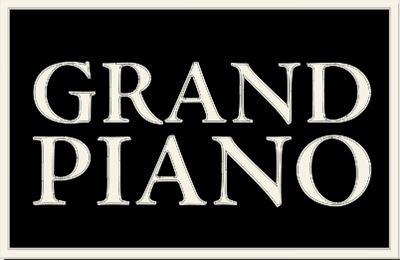

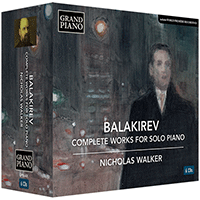

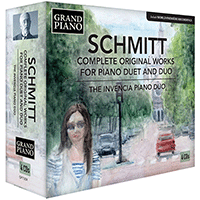

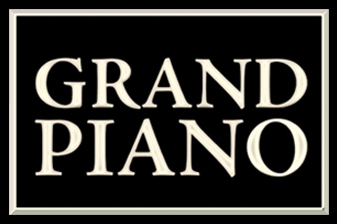 Grand Piano has gained a reputation for producing high quality recordings of rare keyboard gems. Dedicated to the exploration of undiscovered piano repertoire, the label specialises in complete cycles of piano works by many lesser-known composers, whose output might otherwise have remained unknown and unrecorded.
Grand Piano has gained a reputation for producing high quality recordings of rare keyboard gems. Dedicated to the exploration of undiscovered piano repertoire, the label specialises in complete cycles of piano works by many lesser-known composers, whose output might otherwise have remained unknown and unrecorded.






